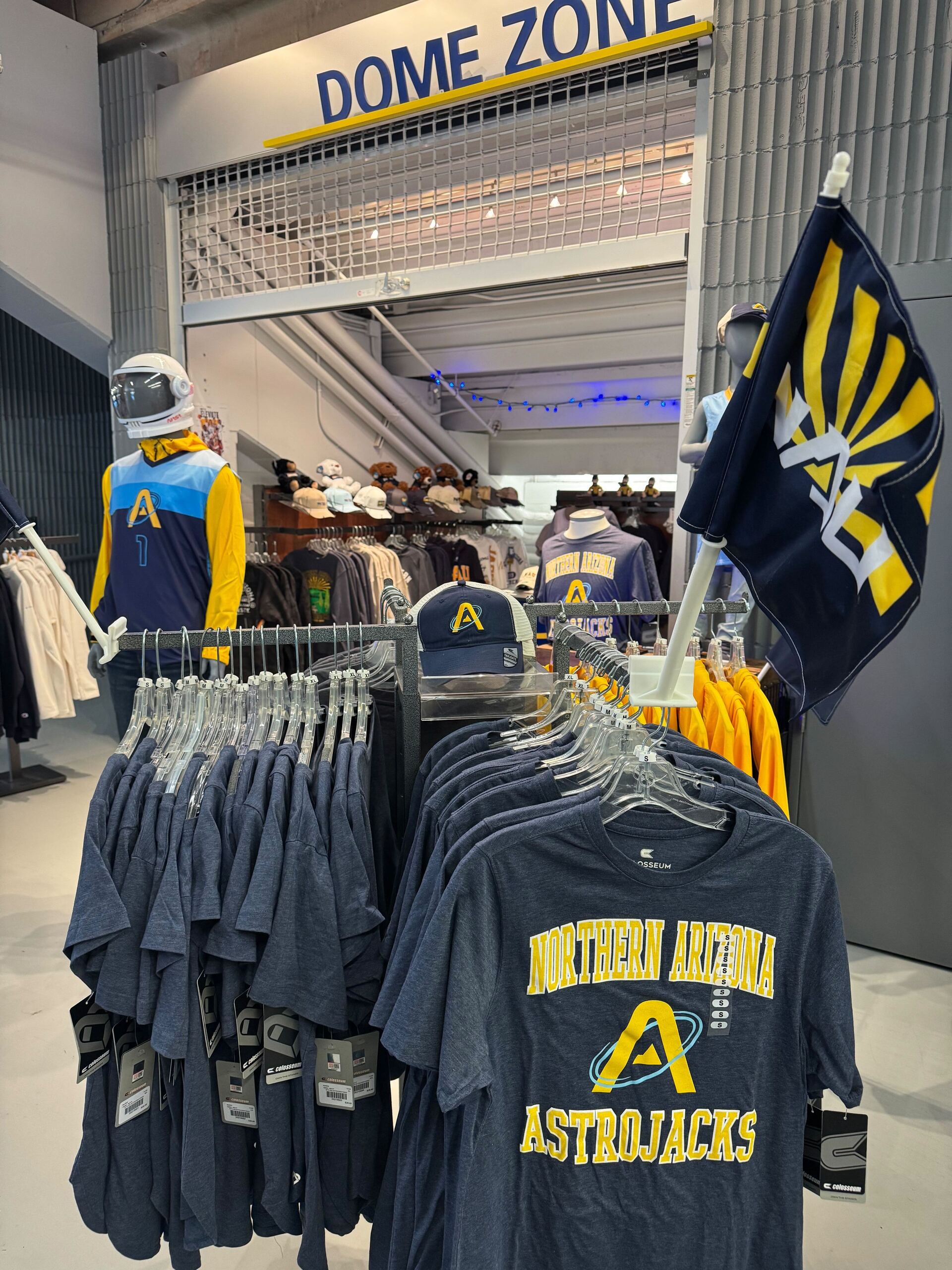Good morning, and thanks for spending part of your day with Extra Points.
Did I forget today was a holiday that closes the schools? Yes. Pray for me as I try to do reporting while my kids are home, demanding I leave my office so they can play Fortnite or something.
This email is brought to you in part by the Joe Moore Award:
Joe Moore Award Midseason Honor Roll
If you want to understand college football, you need to understand the trenches. And there’s no better way to understand the trenches than with the voices of the Joe Moore Award.
Tune in live on Oct. 15 at 8 pm (ET) / 5 pm (PT) for the reveal of the Joe Moore Award Midseason Honor Roll, recognizing the top offensive line units in the country.
The Joe Moore Award is the only college football award given out to a collective unit rather than an individual player, emphasizing the importance of unity, brotherhood, and teamwork that define the culture of the offensive line. Does your team make the cut?
Hosted by CBS Sports personality Jenny Dell, this live YouTube event will unveil the best lines in the country with expert analysis from CBS Sports analyst Aaron Taylor, ESPN analyst Cole Cubelic and more.
The only way to find out is to tune in live on Oct. 15. Set your calendar.
Subscribe to the Joe Moore Award YouTube account today and be sure to catch a new episode of Trench Life every Thursday!
Quick note: I am going to be at Penn State this week! I’m flying to State College on Wednesday, so I can speak at the Creator and Entrepreneurial Journalism Summit at the Bellisario Media Center on October 16. If you’re in the neighborhood, or have recommendations on where I should eat, drop me a line! I’ve never actually been to Penn State before.
Which is interesting timing, since, you know, Penn State is about to lead all sorts of headlines in college sports.
But before we get to James Franklin, I want to zoom out a second and check in on those Big Ten private capital proposals.
Earlier this month, as news first started to trickle out that the Big Ten was seriously considering partnering with a private capital firm, I wrote about how nobody was really talking about what they wanted the money for. The Big Ten, after all, is already the most wealthy conference, and many Big Ten institutions are among the largest in all college athletics. Did they need a capital infusion to invest in future revenue-generating activities, to fund player payroll, to get out of buyouts, or something else?
Late last week, other intrepid reporters appear to have gotten at least a few answers…and they don’t fill me with confidence.
An investment fund of the University of California pension system is in negotiations with the nation’s largest and perhaps most valuable collegiate athletic conference to infuse about $2.4 billion in immediate cash to its 18 schools and help create the conference’s long-discussed subsidiary, Big Ten Enterprises.
Those with knowledge of the negotiations spoke to Yahoo Sports under condition of anonymity as they were not authorized to speak about the potential 20-year agreement with the UC pension system’s investment fund, better known as UC Investments — a $190 billion entity responsible for managing the system’s portfolio. UC Investments manages the endowment and retirement savings of the UC system and is independent from the universities within the system, such as UCLA and Cal.
…
In what is described as a minority investment, UC Investments will provide an infusion of roughly $2.4 billion in a one-time equity distribution to the conference to own a 10% stake in Big Ten Enterprises and receive a cut of the league’s annual distribution. The $2.4 billion will be distributed to the league’s 18 schools in an uneven way, with a portion also used to create Big Ten Enterprises, a private offshoot of the league intended to better monetize the conference’s assets in this more professionalized environment of college athletics.
Over the last year, I’ve talked to a fair number of conference commissioners, CFOs, PE professionals and others about the potential for private capital to enter college athletics. Typically, the biggest potential advantage for college athletics raising money via private capital, (as opposed to borrowing from a bank, selling a bond, etc.), is that private capital investors may have more direct industry experience in whatever revenue generating projects a school or league might consider.
As an example, if a school thought they could grow more revenue by building mixed-use real estate developments around their stadiums, they might want to partner with a PE firm that has lots of experience in commercial real estate development. There are other firms that claim experience and portfolios that are heavy in technology, professional sports and media assets.
That…doesn’t appear to exactly be the situation here. The UC Investment system, as I understand it, would be buying into the Big Ten for a long-term investment (i.e., they would not be permitted to flip their investment stake in five or six years, like another PE firm may want to do), but will also serve as a passive investor. UC Investments isn’t making managerial choices, even if they have a seat on the board. They’re just here to provide a Scrooge McDuck Swimming Pool amount of money.
Money that the Big Ten plans to spend, at least in part, to create something called Big Ten Enterprises.
What’s that? Via ESPN:
Big Ten Enterprises would be tasked with not just handling the league's valuable media rights -- the current seven-year, $7 billion package runs through 2030 -- but trying to maximize sponsorship and advertising deals leaguewide such as jersey patches or on-field logos.
"Think of it this way -- the conference is not selling a piece of the conference," a league source told ESPN last week. "Traditional conference functions would remain 100 percent with the conference office -- scheduling, officiating and championships. The new entity being created would focus on business development, and it would include an outside investor with a small financial stake.
Intellectually, I understand why this might make sense. But I have several operational questions.
What sorts of assets does a conference actually have?
The largest and most valuable asset that any major conference controls is the league’s broadcasting deal. Each Big Ten school transfers their broadcast rights to the league office, which are then sold as a collective group. Right now, the Big Ten is partnered with Fox, CBS and NBC, on a contract that runs through 2030. This asset allows the conference to distribute north of $70 million a year to all full members.
The Big Ten could potentially sign two, and maybe even three, new broadcast deals over the course of the UC System’s investment. But that’s just one asset.
Traditionally, conferences also control sponsorships and ticket revenue for league postseason events (like the Big Ten basketball tournaments), as well as real estate assets (like conference headquarters).
But unlike broadcast rights, historically, schools control their own multimedia rights (MMR), rather than the league. It’s Ohio State that goes out and tries to find sponsors for their basketball scoreboards, or billboards off Interstate 71, or website banner ads. The schools, collectively, control substantially more inventory than the league office.
Those school rights are also often locked up long term in partnerships with MMR sales companies like Playfly, Learfield and JMI.
For this hypothetical private capital infusion to be truly profitable and successful for everybody, Big Ten Enterprises is going to need to generate a lot of revenue. Would the plan be for conference schools to use some of that UC Systems money to buy themselves out of their MMR deals and delegate that function to a centralized office? Would it be for the league to try to create new inventory to be sold to potential brand partners? Would it try to invest in start-ups or unaffiliated businesses to generate returns?
I think there’s an assumption out there that there is an unlimited amount of unrealized corporate sponsorship money in college sports…or at least, a large enough pool of unrealized money to satisfy everyone’s revenue challenges.
Maybe there is, maybe there isn’t. But given how hard it is for schools to sell stuff themselves, and the existing headwinds facing the advertising industry at the moment, I’m not ready to take it as some article of faith that there’s some massive amount of new money available.
And unlike a potential deal with a more traditional private equity investor, I’m not certain if the UC System investment pool can provide the right strategic intelligence to really grow a business development unit.
So this is a big bet! And if all of this really is the plan, I think it would be beneficial for the league office and whoever is leaking plan details to a few reporters, to share more concrete plans about what this new proposed subsidiary will control, and how it will lead to more money.
Because I don’t think expenses are going anywhere
Yesterday, Penn State did something that would have been unthinkable a month ago. They fired James Franklin. While the exact figures have not been disclosed (Penn State’s athletic department is not subject to open records requests), multiple reports have the figure at somewhere between $49 and $50 million dollars. It’s the second-biggest buyout ever, behind Jimbo Fisher and Texas A&M.
Now, Penn State doesn’t necessarily have to fork over all of that money tomorrow. Audrey Synder reports that the buyout payment can be stretched out over several years, limiting the financial damage in any one fiscal year. Penn State will also start a new apparel contract with adidas in 2026, one that multiple industry sources have told me will pay out “substantially” more in cash than their previous deal. If Franklin gets another job relatively quickly, Penn State’s immediate financial obligations won’t be as onerous as Fisher, or potentially other firing this cycle.
But even if Penn State ends up “only” paying something like $16 million instead of $50 million, they’ll still need to pay potential buyouts for assistants and other staffers from the Franklin regime who were on multiyear contracts. They’ll likely need to pay some sort of buyout to hire a new coach (Nebraska’s Matt Rhule, for example, would need to pay $5 million if he resigns to take another job this cycle, according to his contract we have on file in the Extra Points Library), and the salaries of a new coach and assistants, plus whatever adjustments need to be made to team payroll.
That can get expensive in a hurry.
Of course, maybe you feel better about making such a dramatic and expensive personnel decision if you were confident the league was about to vote, and approve, a massive new private capital infusion.
But if Penn State (and others) don’t make meaningful changes to their expenses, and if Big Ten Enterprises doesn’t turn into a meaningful cash cow, then everybody is setting themselves up for big problems just a few years down the road.
Before folks that won’t be around in five years sign another huge contract or cut another huge check, it’s worth considering these questions in far greater detail.


















